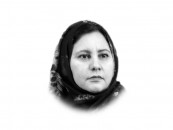Sindh: the mother of lands
Sindh is a land with unique and heterogeneous archaeological, historical, cultural, mystical and aesthetic identities

The land of saints, sufis and mystics; the cradle of great Indus Valley Civilisation; Babul Islam i.e. the Gateway of Islam; the nucleus of peace, love and humankind; the radiator of enlightened and humanistic values, affection and tolerance; and the land of peace and tolerance. These are just some of the epithets Sindh is widely known for. The people of Sindh take immense pride in their rich and bountiful culture, and every year on 5th December they celebrate the Sindhi Culture Day, popularly known as Ekta Day meaning Unity Day. It gives the people an opportunity to reclaim the cultural practices and rich folk traditions that have been passed on for centuries.
On this day, celebrated across the length and breadth of the province, the message of unity, brotherhood and diversity is recalled with much fervour and enthusiasm. Jubilant and enthralling crowds, attired in the traditional Sindhi topi and ajrak, dance to the tunes of traditional Sindhi music. Rallies and gatherings are held in which Sindhi scholars and sughars share folk stories and poetry to earn applause and spread their message.
Sindh is a land with unique and heterogeneous archaeological, historical, cultural, mystical and aesthetic identities. It has exported peace, love, compassion, tolerance and secular tenets throughout the world since antiquity. The people of Sindh take immense pride in their tolerant and pluralistic culture, the roots of which are found in the poetry and the messages of great sufi saints. The great sufi mystics of the land have made it a paradise of peace and tolerance for all. From Shah Abdul Latif Bhittai to Hazrat Sachal Sarmast and from Shah Inayat Shaheed to Shah Karim — all sufi saints propagated the message of affection, love, peace, tolerance and brotherhood not only for the people of Sindh but for the entire world.
The unprecedented level of hospitality, love and warmth is known to whosoever happens to visit the land of the mystics. The rich cultural and historical landscape of Sindh has ever been a source of fascination for traveller, tourists and writers from across the world. German author Peter Panke was greatly inspired by the mystical and cultural panorama of the land and stressed on preserving the Indus Valley’s cultural bounties: “The Indus valley’s unique culture is considered to be one of the richest and most distinctive across the world. You must take care of it”.
However, the land has long been grappling with forces that stand in stark opposition to the messages that the great sufis have preached. The legacy of the mystics appears to be losing its lustre in the minds and hearts of the masses as time passes by. Intolerance, extremism, militancy, disunity and tribal conflicts have been disintegrating the rich culture and heritage of Sindh; and the message of love, tolerance and brotherhood is waning with time. Instead of celebrating the Sindhi Culture Day as just another ritualistic day, it should be ensured that the Day serve as a reminder of the glory of Sindh’s cultural traditions. It should give the people the opportunity to reclaim and rejuvenate the exalted ideas and messages of the great mystics and poets of the land. There is a dire need to rediscover Sindh in order to preserve its lost glory.
Published in The Express Tribune, December 5th, 2021.
Like Opinion & Editorial on Facebook, follow @ETOpEd on Twitter to receive all updates on all our daily pieces.














COMMENTS
Comments are moderated and generally will be posted if they are on-topic and not abusive.
For more information, please see our Comments FAQ